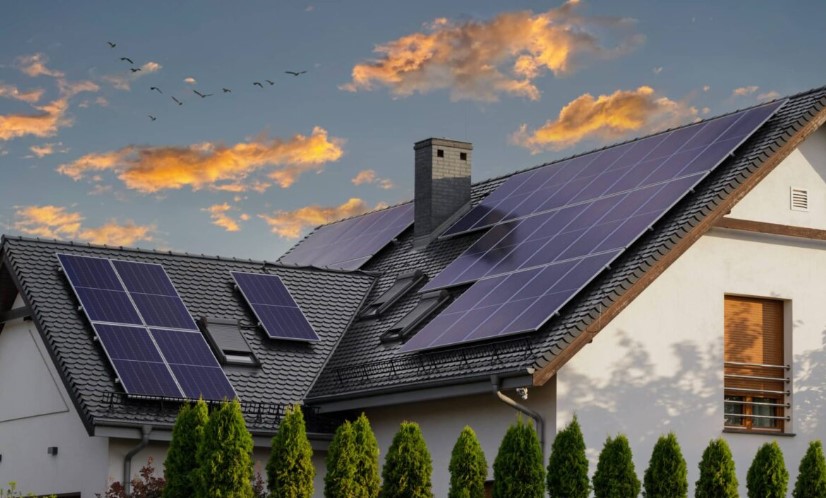As we face increasingly dire environmental challenges, there's an urgent need for solutions that are not only effective but also sustainable. Solar energy is one such solution in harnessing the sun's inexhaustible power.
Focused on the construction industry, this article will explore the benefits of integrating solar technology into modern buildings and its potential to usher in a greener future.
This kind of renewable energy integration is more than a fad; it serves as a beacon for eco-friendliness and innovative design in architecture and construction. Read more!
Solar Panels: The Basics
Solar panels, an essential component of a solar energy system, are devices specifically designed to convert sunlight into electricity. Photographs contained in cells absorb the photons from sunlight, generating electricity through the photovoltaic effect.
Encapsulating these cells, panels are often installed on roofs or open spaces where sunlight is abundant for most parts of the day. One notable example of advanced solar panel technology is the SunPower Maxeon 5 Solar Panels, which showcase high efficiency and reliability. As technology has become more sophisticated, solar panels like these have increased efficiency and become more affordable.
Nowadays, solar panels can be seen on homes, business venues, and institutional buildings as a mainstream method of energy supply.
Advantages of Integrating Solar Panels
Solar panel integration into the design of buildings holds many advantages, several of which make it an attractive solution for businesses, homeowners, and society at large:
Reduction in Operating Costs: One of the most appealing benefits of solar panels is the drastic cut in electricity costs. Although the initial investment can be significant, the long-term savings can be substantial.
Energy Independence: Solar panel-equipped buildings generate electricity, reducing dependence on the local utility grid. This makes buildings self-sufficient in terms of electricity provision.
Environmentally Friendly: Solar energy is a clean, green source of energy. By installing solar panels, we reduce our dependence on fossil fuels, significantly contributing to global warming and air pollution.
Grants and Tax Credits: Governments worldwide are promoting the use of solar power by offering incentives, such as grants and tax credits, to those willing to install solar panels on their properties.
Integrating Solar Panels into Building Design
Incorporating solar panels into buildings goes beyond mere installation on the roof; it involves careful planning and strategy. Architects, contractors, and installers must consider various factors to maximize the efficiency of solar power generation.
Orientation and Placement: The optimal orientation and tilt of solar panels varies depending upon geographical region, which can significantly influence their efficiency.
Building-Integrated Photovoltaics (BIPVs): This is a way of integrating photovoltaic panels into the building's actual architecture, such as windows, facades, or roof shingles. Not only does this save space, but it also provides an aesthetically pleasing finish.
Energy Storage Systems: Batteries store extra power when sunlight is lacking (e.g., during cloudy weather or at night), getting the most out of the installed solar panels.
Solar Tracking Systems: These systems automatically move the solar panels to follow the sun across the sky, improving efficiency by keeping the panels at an optimal angle to the sun.
The Future of Solar Panel Integration
Emerging technologies promise to make solar panel integration more efficient and cost-effective in the future. For practical insights on efficient solar solutions, The Little Green Energy Company offers useful resources. Innovations include solar paint, which can convert any surface into a solar energy harvesting machine, and solar windows, which can generate electricity while maintaining transparency.
Moreover, a futuristic and up-and-coming concept, artificial photosynthesis, is brewing in R&D labs. Mimicking nature's photosynthesis process, it aspires to capture and convert sunlight into proper forms of energy. The progress is expected to go far beyond today's silicon-based solar panels and facilitate previously inconceivable integration methods, pushing the boundaries of what solar power can achieve.
Toward a Greener Tomorrow
Solar power isn't just about harnessing a renewable energy source. It represents a broader narrative about cultivating ecological responsibility, contributing to climate change mitigation efforts, and promoting sustainable living.
Integrating solar technology into construction heralds progress and paves the way to a greener, more equitable future where buildings—from tiny homes to towering skyscrapers—play a part in the ecological solution rather than the problem.
Final Thoughts
Integrating solar energy will become increasingly crucial as the construction industry evolves. By building and renovating structures to accommodate solar power, we take a giant leap toward reducing our carbon footprint and achieving sustainable living.
As every home begins to harness the sun's power, we all contribute to the grand vision of an environmentally responsible society. Each step forward counts, and every building integrated with solar panels puts us closer to a future where sustainability is not just an ideal but a reality.










